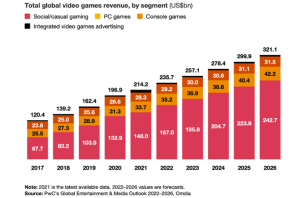
Art and technology have always been intertwined, pushing the boundaries of creativity and innovation. And video games are no exception. In fact, the video game industry has become a powerful platform where both art and technology converge to create immersive and visually stunning experiences. This article explores the fascinating intersection of art and technology in video games, highlighting how these two seemingly distinct domains merge to shape the future of interactive entertainment.
1. Artistry in Game Design:
In the realm of video games, artistry plays a crucial role in captivating players and delivering exceptional experiences. Game designers harness their creative skills to create visually appealing characters, breathtaking landscapes, intricate details, and stunning visual effects that transport players to fantastical worlds. These artists meticulously craft each aspect of a game, incorporating their artistic flair to bring their imaginative visions to life.
2. Technological Advancements in Graphics:
Advancements in technology have revolutionized the visual aspect of video games. From pixelated sprites to realistic 3D models, video game graphics have come a long way. Cutting-edge hardware and software enable the creation of highly detailed, lifelike visuals that blur the line between reality and the virtual world. Real-time rendering, high-resolution textures, and advanced lighting techniques allow players to immerse themselves in visually stunning environments that rival the quality of blockbuster movies.
3. The Role of Concept Art:
Concept art acts as a bridge between imagination and implementation in video game development. Artists create concept art to establish the visual identity, style, and atmosphere of a game. These initial sketches and paintings serve as blueprints for game designers, guiding them in building the virtual worlds players will explore. Concept art showcases the artistic vision and sets the tone for the entire game, ensuring a cohesive and visually cohesive experience.
4. Artistic storytelling:
Video games have evolved to become a narrative medium, captivating players not only with stunning visuals but also with compelling storytelling. The art of storytelling in video games involves crafting rich narratives, well-developed characters, and immersive worlds that resonate with players. Artistic elements, such as beautifully rendered cutscenes, expressive character animations, and carefully composed soundtracks, enhance the storytelling experience and evoke powerful emotions in players.
5. Virtual Reality and Augmented Reality:
Virtual reality (VR) and augmented reality (AR) technologies have opened up new dimensions in the artistry of video games. VR enables players to step inside the game world, offering a truly immersive experience where they can interact with the environment and characters in a lifelike manner. AR overlays virtual elements onto the real world, blending the virtual and physical realms seamlessly. These technologies allow artists and developers to create unique and groundbreaking experiences that blur the boundaries between art, technology, and reality.
Conclusion:
The intersection of art and technology in video games has transformed the industry into a realm of boundless creativity and innovation. Game designers and artists collaborate, utilizing cutting-edge technology to deliver visually stunning and emotionally captivating experiences. Through advancements in graphics, concept art, storytelling, and the emergence of VR and AR, video games have become a compelling medium where artistry and technology unite to shape the future of interactive entertainment. Embrace this captivating blend and prepare to be immersed in the breathtakingly artistic world of video games.


